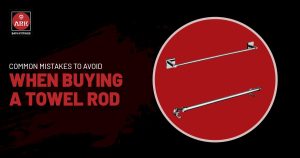A wash basin waste coupling is a small yet vital plumbing component that ensures your basin drains efficiently, remains hygienic, and prevents leaks or unpleasant odors. Over time, issues like leaks, clogs, or worn-out seals can arise, but with the right approach, you can fix or replace your waste coupling yourself. This comprehensive guide covers everything you need to know—from understanding the role of a waste coupling to step-by-step instructions for fixing common problems.
Understanding Wash Basin Waste Coupling
A waste coupling, also known as a drain coupling or waste fitting, connects the drain of your wash basin to the main drainage system. Its primary functions include:
- Efficient Drainage: Channels wastewater and debris away from your basin, preventing water accumulation and keeping your bathroom clean.
- Clog Prevention: Many couplings feature built-in strainers to catch debris, reducing the risk of blockages.
- Sanitary Seal: Prevents foul odors and sewer gases from entering your bathroom, especially when paired with a P-trap.
- Aesthetic Finish: Provides a neat, polished look by covering the drainage outlet.
Read more: Wall Mixer Tap vs. Traditional Taps: Which Is Better for Your Home?
Types of Waste Coupling
Choosing the right type of waste coupling is crucial for effective drainage and leak prevention. The main types include:
| Type | Description | Best For |
| Full-Thread | Threads along the entire length; secure fit. | Traditional basins, no overflow |
| Half-Thread | Threads only on half; smooth section for overflow integration. | Modern basins with overflow |
| Pop-Up (Click-Clack) | Mechanism to open/close drain with a push/pull action. | Sinks where plugs are impractical |
Common Problems with Waste Coupling
Despite their simple design, waste couplings can develop issues over time:
- Leaks: Water dripping from under the basin, often due to worn washers or poor sealing.
- Clogs: Accumulation of debris or malfunctioning stoppers, especially in pop-up types.
- Odors: Poor sealing or dried-out traps allowing sewer gases to escape.
Tools & Materials Needed
- Adjustable pliers or water pump pliers
- Screwdriver (if needed)
- PTFE (plumber’s) tape or silicone sealant
- Replacement washers or waste coupling (if required)
- Cleaning cloth
Read more: Why Wall Mixer Taps Are the Best Choice for Indian Bathrooms
Step-by-Step Guide to Fixing Wash Basin Waste Coupling
1. Turn Off Water Supply and Prepare
- Turn off the water supply to the basin as a precaution.
- Place a bucket under the basin to catch any residual water.
2. Remove the Old Waste Coupling
- Unscrew the basin trap using pliers and disconnect it from the waste.
- Loosen and remove the large nut securing the waste coupling to the basin.
- Remove the old washers and gently pry out the waste coupling.
- Clean any old sealant or residue from the basin’s drain hole with a wet cloth.
3. Inspect and Prepare the New Coupling
- Check that the new waste coupling matches your basin’s size and type (full-thread, half-thread, or pop-up).
- Ensure all components are present: upper flange, lower body, rubber washers, and retaining nut.
Read more: Why Sensor Taps Are the Future of Water Saving Technology
4. Install the New Waste Coupling
- Apply Sealant: Apply a bead of silicone sealant or plumber’s putty around the underside of the waste flange for a watertight seal.
- Insert Coupling: Place the waste coupling into the basin’s drain hole from above, ensuring it sits flush.
- Position Washers: From underneath, fit the rubber washer and plastic washer onto the coupling’s threaded section.
- Secure with Nut: Screw the retaining nut onto the threads and tighten it firmly, holding the top of the waste to prevent it from spinning.
5. Seal the Threads (If Leaking)
If you notice leaks from the threads even after tightening:
- PTFE Tape Method: Remove the coupling and wrap PTFE tape around the threads several times before reinstalling. This fills any gaps and prevents water from seeping through the threads.
- Alternative: Use additional silicone sealant around the threads and washers for extra protection.
6. Reattach the Trap and Test
- Reconnect the basin trap and any pipes to the bottom of the waste coupling.
- Turn on the water supply and run water into the basin.
- Check carefully for leaks beneath the basin. If you see any, tighten the nut further or add more PTFE tape or sealant as needed.
Maintenance Tips for Waste Coupling
- Regular Cleaning: Remove debris and clean the strainer or stopper to prevent clogs.
- Avoid Harsh Chemicals: Use mild cleaners; harsh chemicals can damage seals and washers.
- Inspect Seals: Periodically check rubber washers and seals for wear; replace if necessary.
- Prompt Repairs: Address leaks or blockages immediately to prevent further damage.
Regular maintenance of your wash basin waste coupling not only extends its lifespan but also keeps your bathroom fresh and functional. Simple habits like periodically checking for slow drainage or water marks under the basin can help you catch issues early, saving you time and money in the long run. Remember, a well-maintained waste coupling is key to a hassle-free and hygienic bathroom experience.
When to Call a Professional
If you encounter persistent leaks, severe clogs, or are unsure about the compatibility of your waste coupling with your basin, it’s best to consult a professional plumber. Some issues, like damaged basin surfaces or corroded fittings, may require expert attention.
Conclusion
Fixing a wash basin waste coupling is a straightforward DIY task with the right tools and guidance. By understanding the types, following proper installation steps, and maintaining your waste coupling, you can ensure efficient drainage, hygiene, and longevity for your wash basin plumbing. Regular upkeep and timely repairs will keep your bathroom running smoothly and prevent costly plumbing issues down the line. Taking a proactive approach to plumbing maintenance not only saves you money but also gives you peace of mind, knowing your wash basin will function reliably for years to come.
Read more: Top 10 Benefits of Installing a Sensor Tap in Your Home or Office












